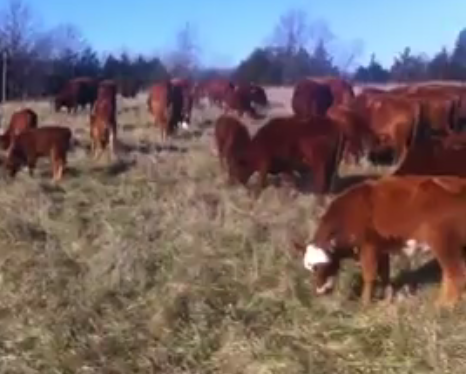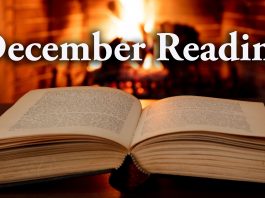

On Pasture’s New Year’s Resolution is to help you move into this grazing season in a way that ensures a happy, healthy life, and a grazing operation that gets you there.
Step 1 is all about developing a vision and goals so you know where you are and what’s important to you. This is the foundation for all the grazing decisions you make, from paddock size to fencing style, to animals you raise and more.
We’ve learned from Troy Bishopp, John Marble and Jenn Colby that our vision will evolve and change over time. And that’s not a bad thing. So keep on working on this step, with the resources we’ve been providing since the beginning of December.
Step 2 is to create an inventory of your resources so that you’ll know what you’re starting with. There are different ways to do this, but today, we’re going to show you how Troy Bishopp does it – with a farm map.
Why you want a decent farm map with accurate acreages
Troy Bishopp has been helping graziers develop good management plans for decades. He even developed a set of grazing chart templates to make it easier, and has spent over a decade teaching folks how to use them.

Here’s what Troy says his farm map does for him:
I can make decisions about carrying capacity, field boundaries and fertility applications.
Different pastures have different soils, slopes and aspects which means varying production capabilities. Troy’s map helps him track these differences so he knows how many animals he can feed, where he might need to add some kind of fertility, and how he’s doing as he goes along.
Troy says, “Whatever you do, the point is to measure what you are actually managing. Many times I see whole fields measured which is fine but when you start breaking them down into paddocks for the grazing chart you may want to re-measure. It’s very helpful to know the acreage of the paddocks.”
I can track field production data.
With a map, you can measure progress and track how different management affects forage and your bottom line.
It’s a guide to help family know where the cows are and where they should go.
This was critical for Troy the year he had a heart attack and they had to take over moving the animals.
A map helps me plan around unique shapes, sensitive landscape features and to chart water courses while viewing the farm as it changes over time.
Troy has been following the changes to the forage around his riparian zones in particular. Keeping these stream-side areas is important to water quality, erosion prevention and soil health.
It is necessary for organic certification.
You might also find that maps are required for loans and grants.
It’s a visual tool that helps me with my grazing planning chart.
When you’re penciling in where your herd will be when, it helps to be able to take a quick look at your map. Then, if for example, you need to adjust paddock size so that you can take a short vacation in the middle of summer, you’ll know which areas will work best for you.

Map Making 101
If you’re already putting the brakes on because making a map is beyond your skill set, don’t worry. There are conservation professionals in your area who can help you map your farm or ranch. Start with your local Natural Resources Conservation Service Office or Conservation District Office. Some Cooperative Extension Service offices can help too.
Keep in mind that different staffs and different offices have different capabilities and skill levels so keep asking until you find what you need. It’s also helpful to remember that these often offices aren’t fully staffed and the folks who are there are very busy. It pays to make an appointment. Then tell them what you’re trying to do, and why. Pictures are worth a thousand words, so feel free to print this article so they can see examples.
A good relationship with a conservation professional can provide all kinds of benefits long term. So take your time, and be patient and kind.
Making Your Own Map
If you have some computer skills, it’s quite possible to make your own using Google Maps. Google Maps to get your own aerial view of your property. Once you’re at Google Maps, type in your address and when you see your location, simply zoom in until you can see your property at a size that makes it easy for you to begin adding paddock lines. If you don’t want an account you can simply print out your map and draw your fence lines in by hand.
Google Maps has really improved over the years. You can draw boundaries around pastures, name them, add information in the description box about forage, soils and more. You can color them in, and even add pictures of them. There’s also a tool that measure distances (in case you’d like to know how much fence you need) and finally, you can share maps online so that folks you’re working with can find them easily.
To get you started I made this set of downloadable instructions.
Adding Information About Your Soils
Troy uses the Natural Resources Conservation Services web soil survey to add information about his soils and their capabilities to his maps. You can do it too. Just follow the instructions from this On Pasture article.
One of the especially helpful things you’ll find here are estimates for pounds of forage produced in your area by your specific soils on wet, average and dry years. It’s a great first step in figuring out how many animals your land resource can support. (We’ll talk more about that in upcoming issues too.)
Troy says he likes this tool because it helps him with his nutrient management plan and field by field fertility information. He integrates this into his map and his grazing chart. “It’s up to you,” Troy says, “But I like all the info in one place so I see it every day without searching through binders for all the information. That helps me make better decisions.”
Make a map that works for YOU
Whatever route you take to put your map together, here’s some advice from Troy, “Make it what YOU want. As far as naming the fields, I’ve seen all kinds of combinations from numbers to letters to names. Make it flow the way you want it and so your family can grasp it too.

Troy says size matters as well. “I like having a good sized map after I’ve done all the creating.” He takes his file to his local county planning department friend, Jamie, who sends it through her color plotter to print off a larger map. “It’s an awesome relationship if you have it,” says Troy. “I also work with Soil and Water Conservation Districts, NRCS offices or sometimes I take a CD/travel drive to a print shop locally and get it printed for just a few bucks.” You have all kinds of options.
To give you an idea of the variety of map possibilities, here are some examples from farms Troy has worked with. Note that not all use technology. If hand drawn maps work for you, that’s great too. Also notice how different maps identify resources important to the operator. (Click on the pictures for a larger view.)
Troy and I hope this helps you with your mapping home work. Coming up in March and April we’ll show you how to figure your forage needs and production, set you up with a free grazing chart template, and then show you how to use all this information to create a grazing plan that helps you feed your animals, grow great forage, improve your landscape, AND, most importantly, make sure you have time for family, friends, and fun.
Stay tuned!









Thanks Kathy. You covered alot. If any folks have other ways of doing things they’d like to share, by all means let Kathy know, especially really large farms or really small farms. Appreciate ya’ll.
Comments are closed.